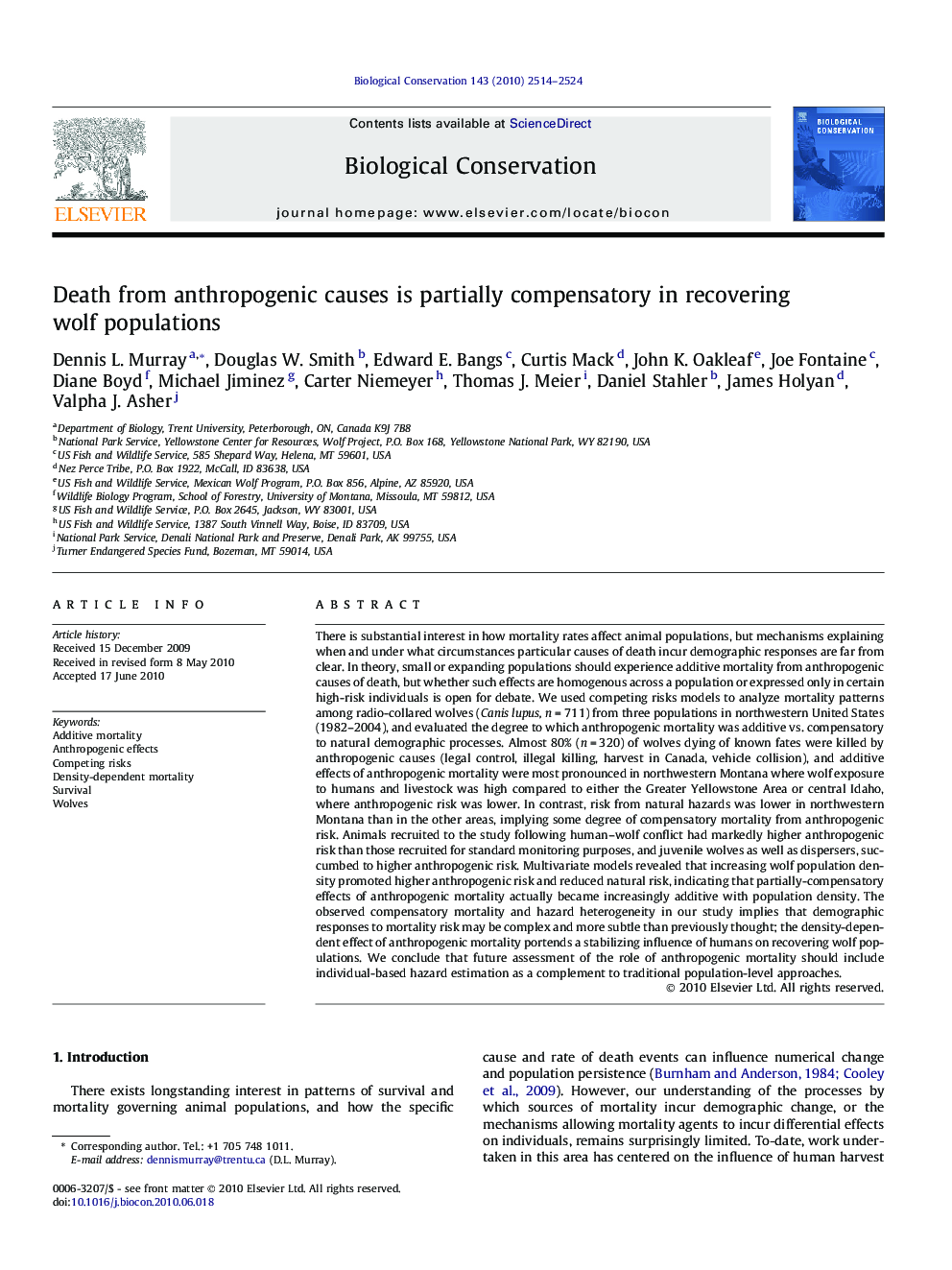| کد مقاله | کد نشریه | سال انتشار | مقاله انگلیسی | نسخه تمام متن |
|---|---|---|---|---|
| 4385922 | 1304553 | 2010 | 11 صفحه PDF | دانلود رایگان |

There is substantial interest in how mortality rates affect animal populations, but mechanisms explaining when and under what circumstances particular causes of death incur demographic responses are far from clear. In theory, small or expanding populations should experience additive mortality from anthropogenic causes of death, but whether such effects are homogenous across a population or expressed only in certain high-risk individuals is open for debate. We used competing risks models to analyze mortality patterns among radio-collared wolves (Canis lupus, n = 711) from three populations in northwestern United States (1982–2004), and evaluated the degree to which anthropogenic mortality was additive vs. compensatory to natural demographic processes. Almost 80% (n = 320) of wolves dying of known fates were killed by anthropogenic causes (legal control, illegal killing, harvest in Canada, vehicle collision), and additive effects of anthropogenic mortality were most pronounced in northwestern Montana where wolf exposure to humans and livestock was high compared to either the Greater Yellowstone Area or central Idaho, where anthropogenic risk was lower. In contrast, risk from natural hazards was lower in northwestern Montana than in the other areas, implying some degree of compensatory mortality from anthropogenic risk. Animals recruited to the study following human–wolf conflict had markedly higher anthropogenic risk than those recruited for standard monitoring purposes, and juvenile wolves as well as dispersers, succumbed to higher anthropogenic risk. Multivariate models revealed that increasing wolf population density promoted higher anthropogenic risk and reduced natural risk, indicating that partially-compensatory effects of anthropogenic mortality actually became increasingly additive with population density. The observed compensatory mortality and hazard heterogeneity in our study implies that demographic responses to mortality risk may be complex and more subtle than previously thought; the density-dependent effect of anthropogenic mortality portends a stabilizing influence of humans on recovering wolf populations. We conclude that future assessment of the role of anthropogenic mortality should include individual-based hazard estimation as a complement to traditional population-level approaches.
Journal: Biological Conservation - Volume 143, Issue 11, November 2010, Pages 2514–2524